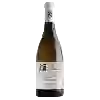
Ancien Domaine Paul ChansonPommard
This wine generally goes well with poultry, beef or veal.
Food and wine pairings with Pommard
Pairings that work perfectly with Pommard
Original food and wine pairings with Pommard
The Pommard of Ancien Domaine Paul Chanson matches generally quite well with dishes of beef, veal or game (deer, venison) such as recipes of fillet of beef in a foie gras and truffle crust, roast veal grand-mère madou or wild boar stew.
Details and technical informations about Ancien Domaine Paul Chanson's Pommard.
Discover the grape variety: Aubin
Aubin blanc is a grape variety that originated in France (Lorraine). It produces a variety of grape specially used for wine making. It is rare to find this grape to eat on our tables. This variety of grape is characterized by medium-sized bunches and small grapes. Aubin Blanc can be found in several vineyards: South West, Cognac, Bordeaux, Lorraine, Provence & Corsica, Rhone Valley, Languedoc & Roussillon.
Informations about the Ancien Domaine Paul Chanson
The Ancien Domaine Paul Chanson is one of of the world's greatest estates. It offers 1 wines for sale in the of Pommard to come and discover on site or to buy online.
The wine region of Pommard
The wine region of Pommard is located in the region of Côte de Beaune of Burgundy of France. Wineries and vineyards like the Domaine Leroy or the Château de Pommard produce mainly wines red. The most planted grape varieties in the region of Pommard are Pinot noir, Cabernet-Sauvignon and Gamay noir, they are then used in wines in blends or as a single variety. On the nose of Pommard often reveals types of flavors of cherry, truffle or clove and sometimes also flavors of game, cheese or rose petal.
The wine region of Burgundy
Bourgogne is the catch-all regional appellation title of the Burgundy wine region in eastern France ("Bourgogne" is the French name for Burgundy). Burgundy has a Complex and comprehensive appellation system; counting Premier Cru and Grand Cru titles, the region has over 700 appellation titles for its wines. Thus, Burgundy wines often come from one Vineyard (or several separate vineyards) without an appellation title specific to the region, Village or even vineyard. A standard Burgundy wine may be made from grapes grown in one or more of Burgundy's 300 communes.
The word of the wine: Gouleyant
Characteristic of supple and light wines, particularly new wines.









